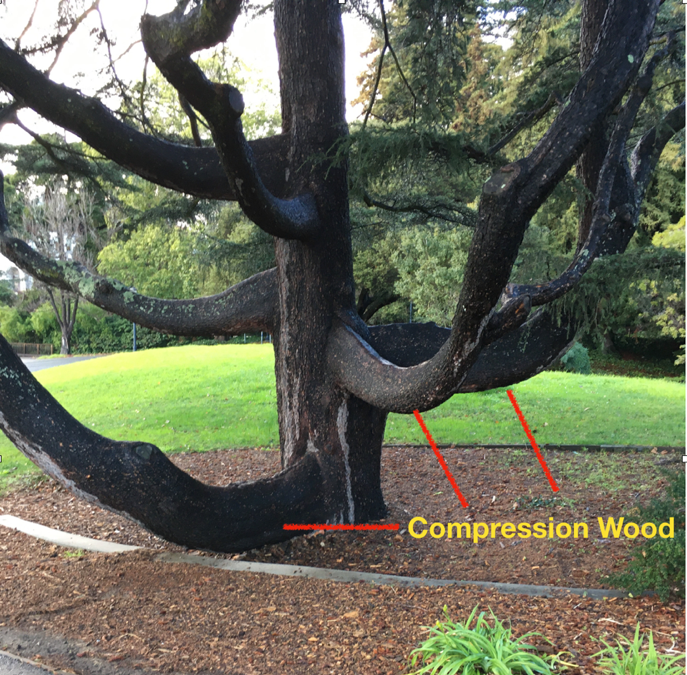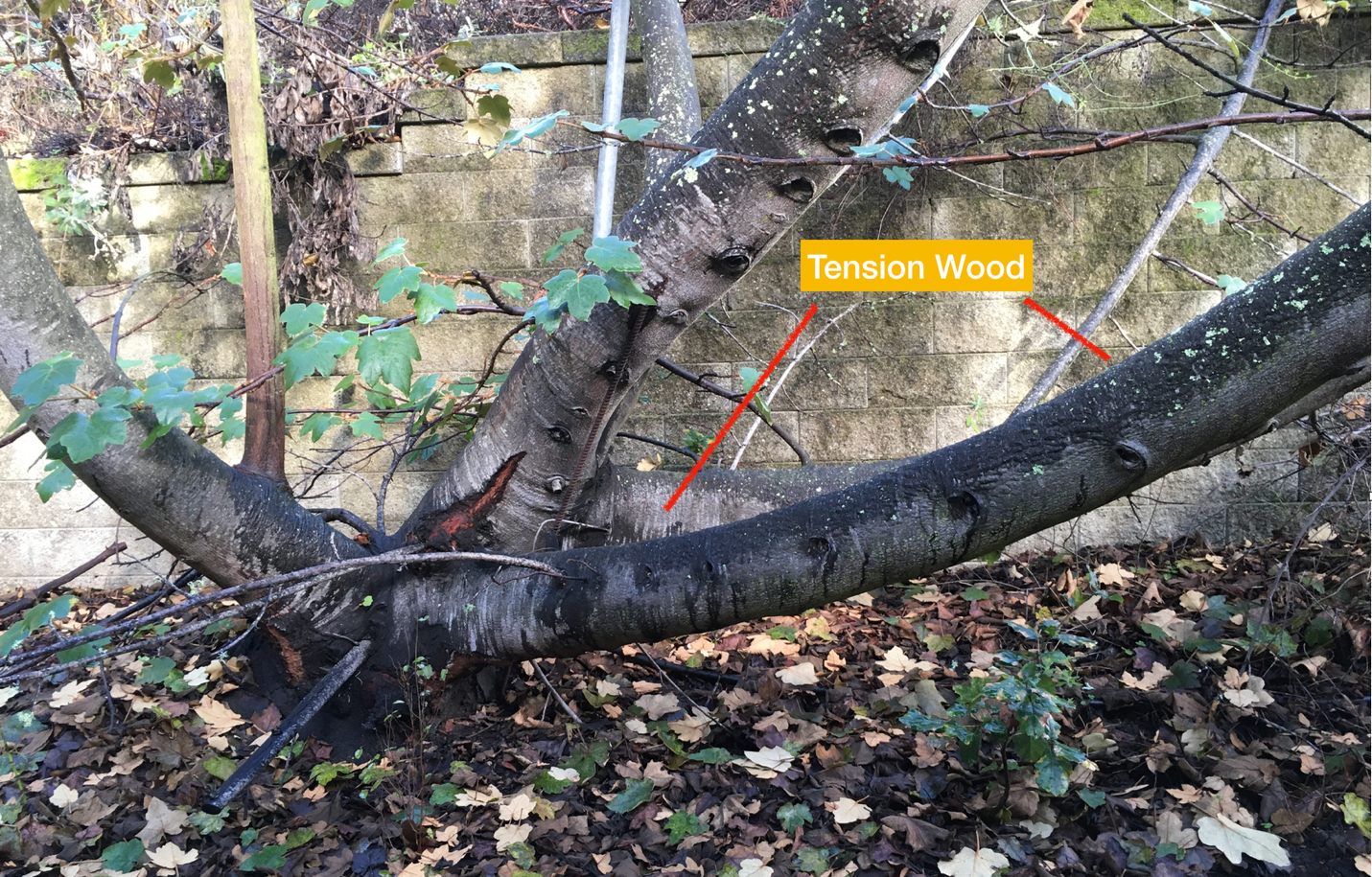
Dr. Lew Feldman, Garden Director
In the natural environment, it is not unusual to come upon a leaning tree or branch showing a surprising degree of bending. Such a situation frequently is the result of a landslide, which alters the normal vertical orientation of the tree, or could be a consequence of winds continually blowing from one direction (as along the coast), causing the tree to tilt, as pictured above.
 In order to counter the force of the wind, or the effects of a landslide, which could lead to the leaning trunks or branches splintering and breaking, plants respond by producing a unique type of wood known as reaction wood. Reaction wood is part of the tree’s attempt to straighten and upright branches and trunks for which the normal vertical orientation has been altered. Trees can form two types of reaction wood, depending on whether the tree is a conifer (a cone-bearing plant) or an angiosperm (a plant which makes flowers). In both cases, however, if you make a cut across a trunk or branch that has formed reaction wood, you’ll notice eccentric, off-center growth of the annual rings.
In order to counter the force of the wind, or the effects of a landslide, which could lead to the leaning trunks or branches splintering and breaking, plants respond by producing a unique type of wood known as reaction wood. Reaction wood is part of the tree’s attempt to straighten and upright branches and trunks for which the normal vertical orientation has been altered. Trees can form two types of reaction wood, depending on whether the tree is a conifer (a cone-bearing plant) or an angiosperm (a plant which makes flowers). In both cases, however, if you make a cut across a trunk or branch that has formed reaction wood, you’ll notice eccentric, off-center growth of the annual rings.
In conifers, this eccentric growth arises because more tissue (bigger annual rings) is being produced on the lower side of the leaning trunk/branch, compared to the upper side, whereas in woody angiosperms the situation is reversed, with more tissue formed on the upper side of the tilted stem/branch. Different names are given to these two types of reaction wood; compression wood in conifers and tension wood in angiosperms. In conifers, increased tissue formation on the lower side functions to “push” to the upright the stem or branch. In angiosperms, reaction wood formation on the upper side also moves the trunk/branch to the upright, but this is a consequence of the production on the upper side of the branch of cells known as fibers, which contract and consequently “pull” the branch/trunk into an upright orientation.


Reaction wood is generally not acceptable for use in construction or in many other applications, such as in furniture making. Tension wood can warp during drying. Compression wood too has serious drawbacks. Not only is it weak in critical strength, but it can shrink as the lumber dries, resulting in bowing and twisting of the lumber. But the characteristics which limit the general usefulness of reaction wood also confer upon the wood a very special function; namely, certain types of reaction wood are used to make a “tool” called a weather stick, which functions as a surprisingly accurate predictor of the weather.
 Weather sticks are most often made from the dried twigs of balsam firs and were apparently first used by the Abenaki Indians who lived along the coasts in New England and in southeastern Canada. Depending on the humidity and temperature, the cells on the upper and lower sides of a twig with reaction wood respond differently, causing the twig to curl upwards when good weather is headed our way, or downwards when the weather is about to take a turn for the worse. Check out this video to view the dynamics of the weather stick.
Weather sticks are most often made from the dried twigs of balsam firs and were apparently first used by the Abenaki Indians who lived along the coasts in New England and in southeastern Canada. Depending on the humidity and temperature, the cells on the upper and lower sides of a twig with reaction wood respond differently, causing the twig to curl upwards when good weather is headed our way, or downwards when the weather is about to take a turn for the worse. Check out this video to view the dynamics of the weather stick.
So next time you come across the stump from a previously tilted (horizontally-oriented) branch or tree trunk, make note of the eccentric growth, and ask yourself, am I looking at the stump of a conifer or of an angiosperm?
